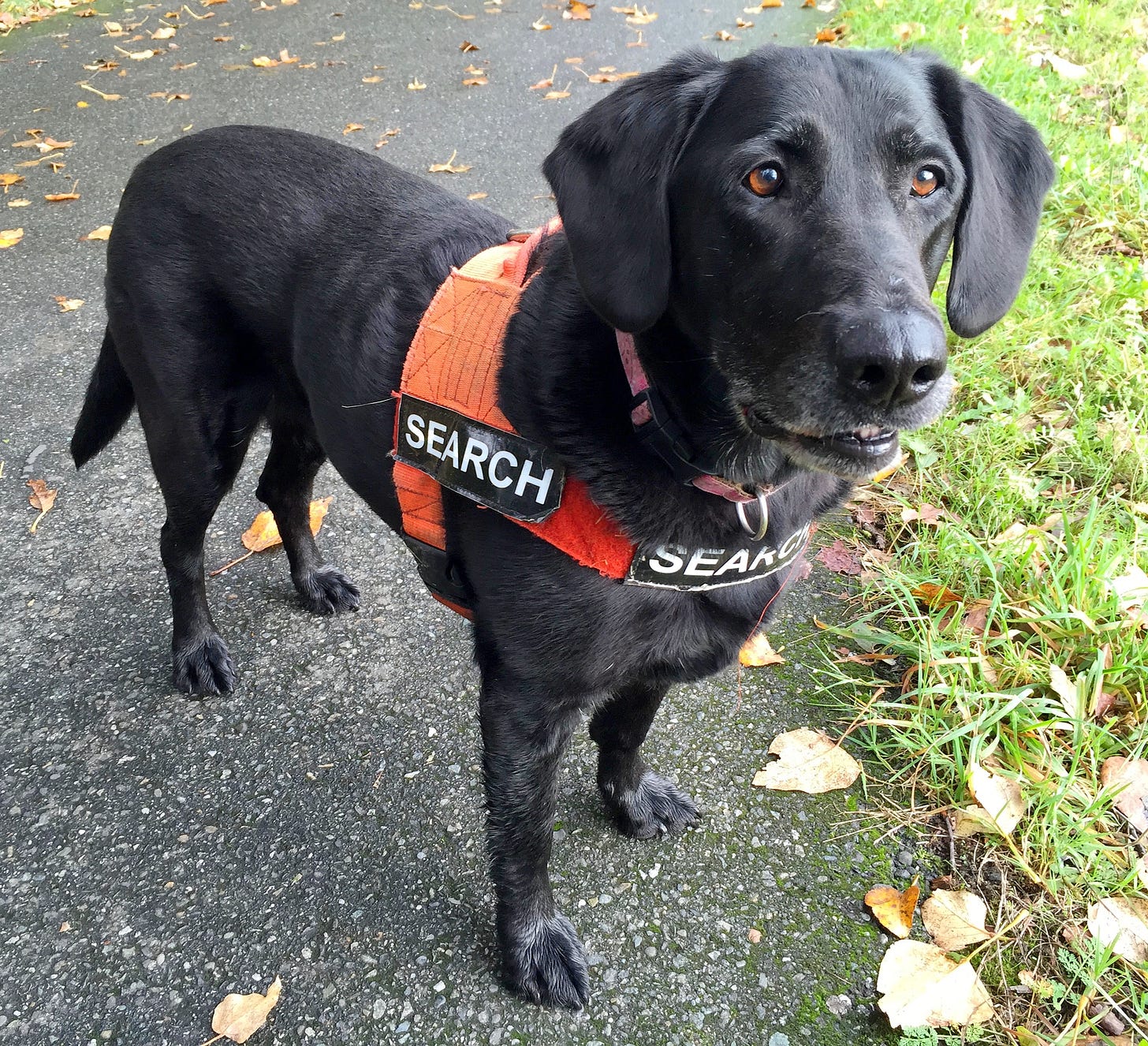Video for a Lost Dog
If your dog is missing, you should maximize your chances of finding your dog in every way possible. This includes reaching the widest audience on social media. Video tends to capture the attention of people more that still pictures. Also, a video can show your dog more completely. In the case of a dog such as a black lab, it can sometimes be difficult to tell one dog from another. A video can give a better sense of what a dog really looks like, how she moves, and her character, which can be helpful for identification.
Another reason I would suggest a video instead of a still picture is that sometimes people include several pictures in their post, to try to show their dog from several angles, to show important markings or features. In the post, multiple pictures are shown in reduced size, and they are harder to see when people are scrolling. In a Facebook group with 30 to 40 lost dogs posted every day, you want your dog to stand out. People are more inclined to help you if you get their attention and show them a clear, detailed picture. People are more willing to help you if you make it easy for them to help.
With a video, you can convey other information, such as the point where your dog was last seen, your phone number, and instructions such as: Do Not Chase. You could even include a map of sightings in the video. Of course, when you post on social media, you will want to include text with the picture or video, so you can put details there, too. Sometimes, pictures can be shared without the attached text, so having the information in the video means that at least the minimum information will get around. A video can have audio, too. If you’re like me, you scroll through videos with the audio muted. Try to have the basic information shown in text in the video, and you can include more information in the audio, but don’t count on people listening to the audio.
A reasonably clear video might take 15 minutes to make. If your dog is lost, posting on social media can be one of the most important ways of getting the word out about your dog. I think taking 15 extra minutes to create a video is a good investment of time. However, I recommend that everyone should make a “lost dog video” for their dogs BEFORE they go missing. You can have it ready to go, just in case. You can share it with friends and family, (making it clear to them, of course, that your dog is not currently lost, and you have made the video just as a precaution, in case your dog does go missing.)
I have been finding lost pets for 14 years, and in all of that time, I have never gone on a vacation or taken a trip without my dogs. Too many of the people who hired us to find their lost dogs and cats were people who went on vacation and their pets were lost by the pet sitter. If I ever could be persuaded to go on a trip without my dogs, I would first make a “lost dog video” in advance, to be prepared, just in case. I would also follow all the loss prevention tips available here.
When making your video, try to use still pictures and video, and show your dog from different angles and in different lighting. Use your best, sharpest, clearest pictures. If you don’t have many clear pictures of your dog, this is the perfect time to take some. Keep your video fairly short, about a minute or less. Use the video editor to add text to the video. I used the iMovie app that comes installed on Apple devices. It’s fairly easy to use. If you are having trouble understanding how the various features work, a friend or family member can probably help you. There are other video apps that can be used to add cool effects, but really you want a video to be fairly plain and uncluttered. One other tip: have the first frames of the video be a still image, your best photograph of your dog, with the words LOST DOG and your phone number so that if the video doesn’t play automatically, or if someone takes a screenshot, that basic information will be shared.
If my dog was lost, I would make a short video to post on social media. The average search for a lost pet will take 80 hours of the pet owner’s time in the first week, and probably 120 hours of volunteer effort from friends and family. The average hourly wage in the US is $33 an hour. That’s over $6,000 worth of effort expended in the search for a typical lost pet. Even though no one is actually getting paid for their time, usually, in the search for a lost pet, my point is that time is valuable, and the search for a lost cat or dog is frequently a huge investment of time. Taking 15 to 30 minutes to make an eye-catching video with clean, sharp images and basic information, is a good investment of time, considering all of the other work you will need to be doing. Getting your information out to the widest audience could significantly shorten the amount of time you need to search for your pet. I can’t really think of a downside to creating a video for your lost dog.




